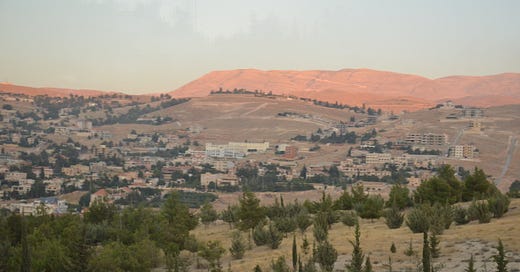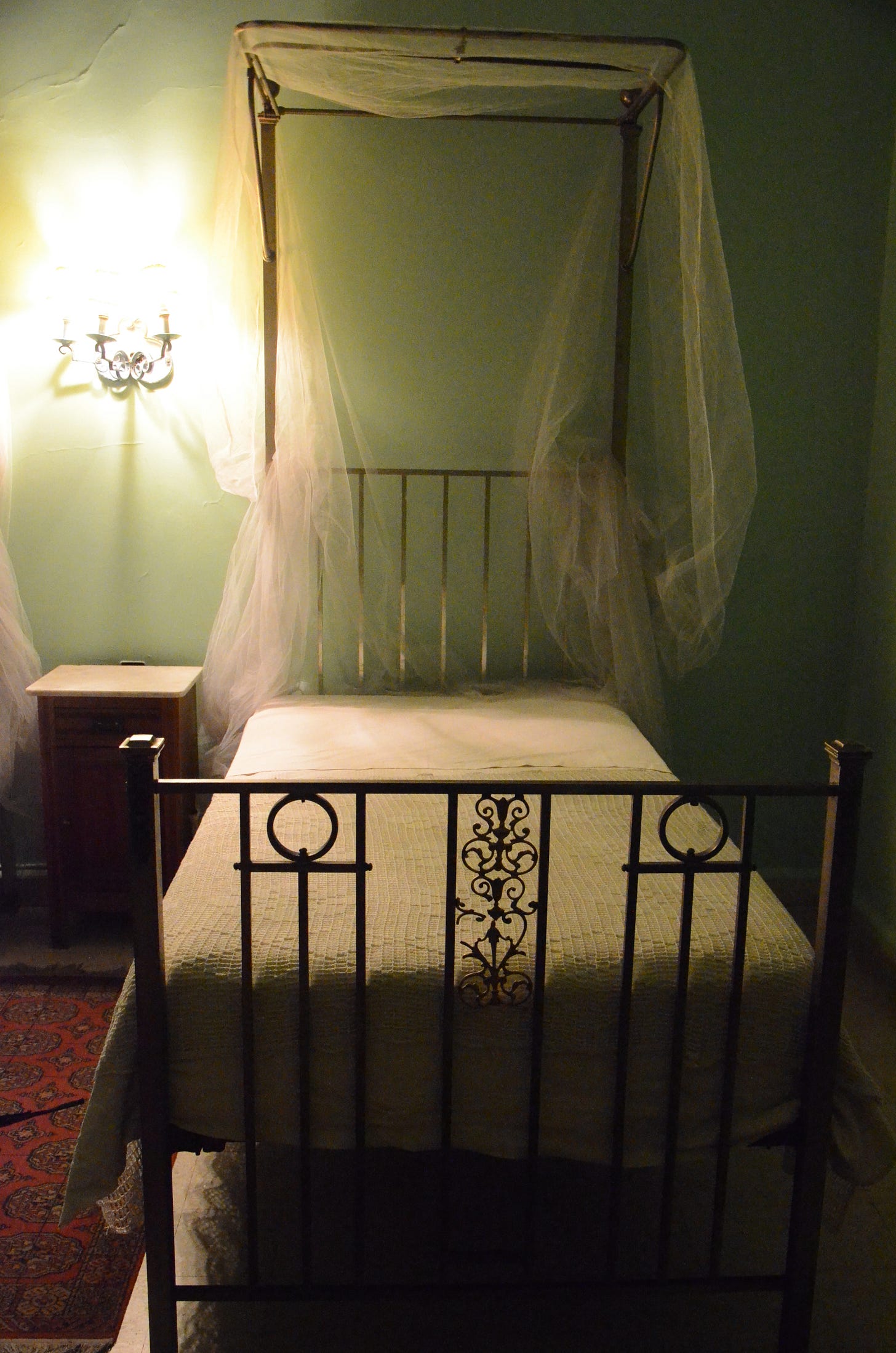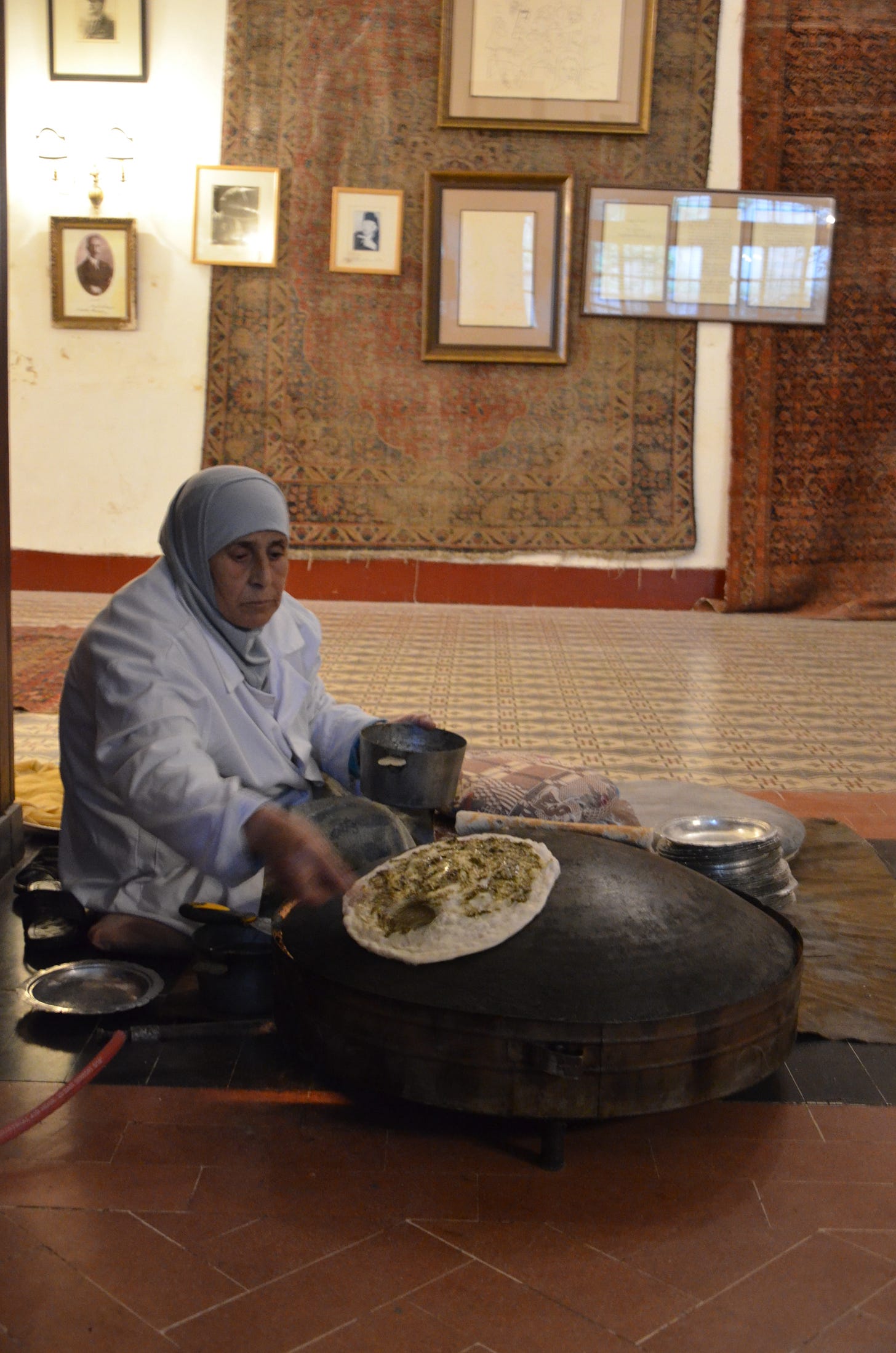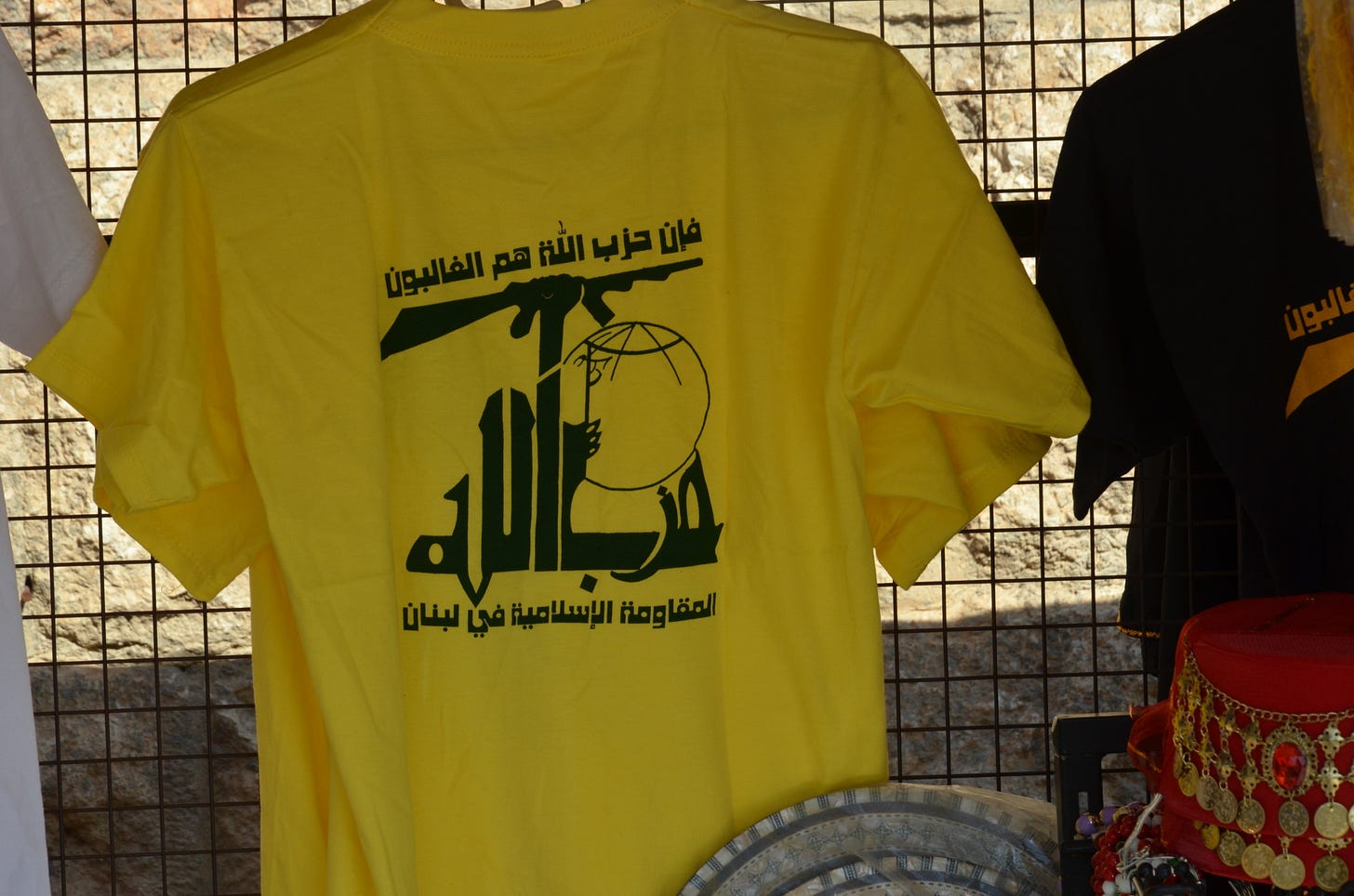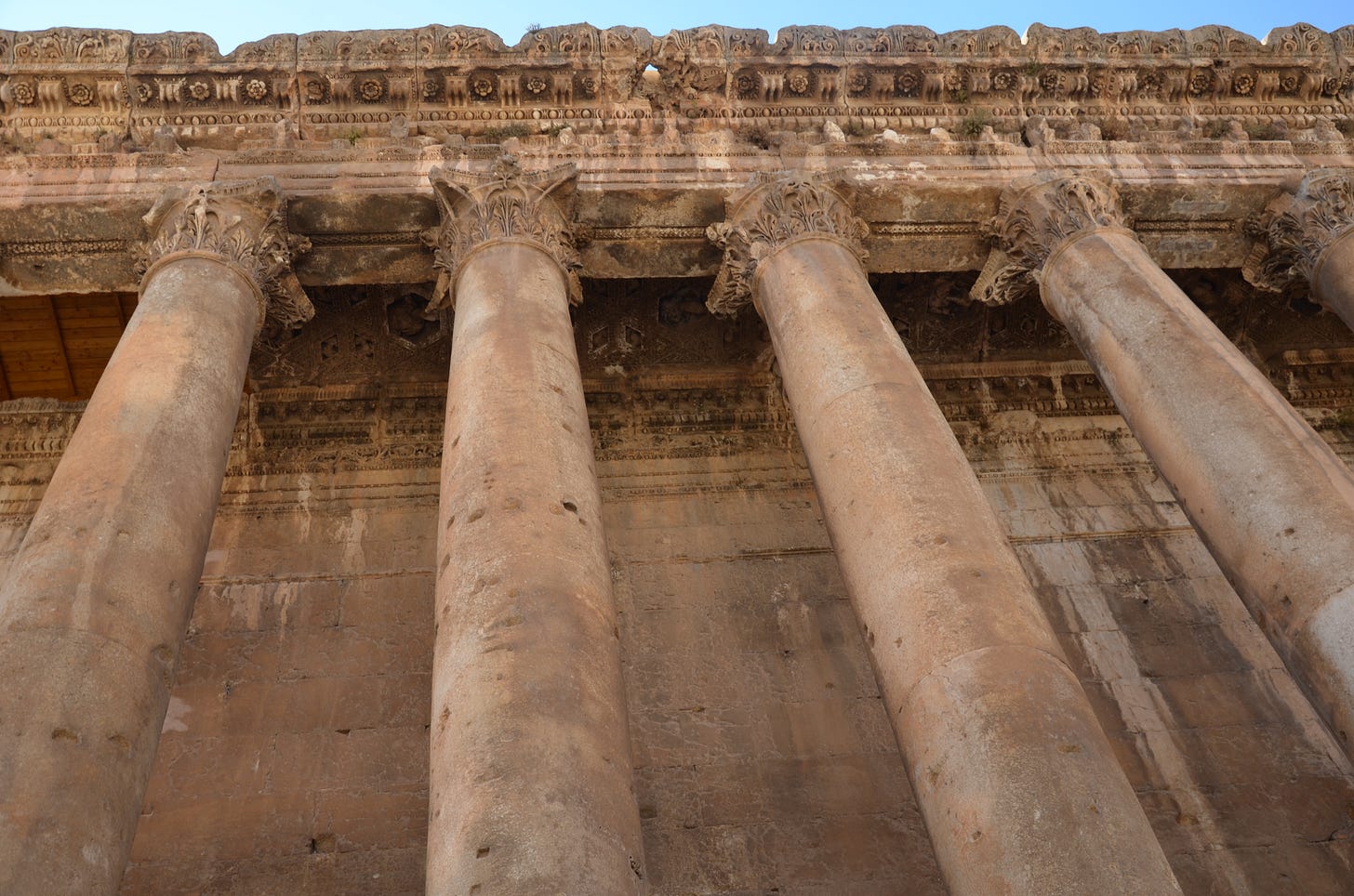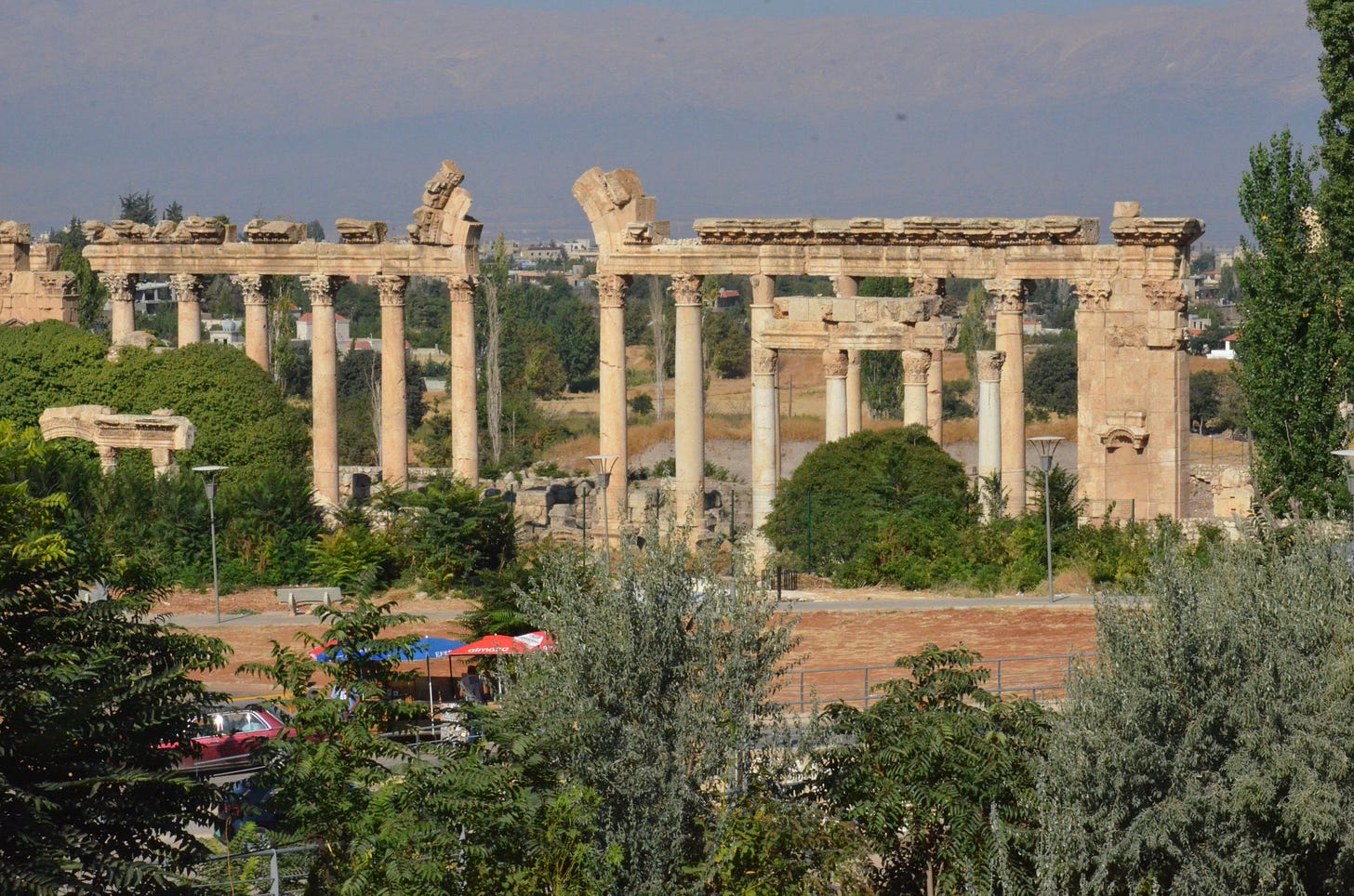In the Hezbollah heartlands
Hezbollah has been in the news increasingly in recent weeks due to the Israeli-Gaza conflict, and it reminds me of a visit I made to Lebanon just before the pandemic
The road from Beirut to the Bekaa Valley in southern Lebanon, home of outstanding Roman ruins at Baalbek, and the Hezbollah heartlands, is wild and isolated. The rocky scrubland rapidly rises in altitude and is punctuated by cedar, pine, oak and cherry trees, and hardy pink valerian plants.
You drive through a few little villages, with sleepy cafes populated by young men idling away the day, and shops selling dated clothes fashions, a small selection of groceries, or pigeons crammed in pitifully tiny cages. Scrawny cats are always on the prowl, searching for scraps.
Cannabis is another feature of this region: despite the cultivation of cannabis being illegal in Lebanon for many years, it has long been grown in the Bekaa Valley, and in 2020 the government passed a law legalising its cultivation for medical use, the first Arab country to do so.
That well-known marijuana expert, Foreign Secretary and ex-PM David Cameron, wrote about scoring ‘Red Leb’ from the Bekaa Valley in his memoirs - thankfully in his younger years rather than when he was Prime Minister.
Near the Syrian border I passed a couple of small Syrian refugee camps, with makeshift tents, and huts with their roofs held down by old tyres. The Bekaa region hosts the most refugees in the country, and in January 2023 the total number of registered Syrian refugees in the Bekaa stood at 318,713 individuals.
As I neared Baalbek, there was an electricity in the air, and an underlying sense of instability. Armed roadblocks with tanks gave way to villages that were noticeably more rural and scruffy than before. Posters of Hezbollah leaders, bearded elderly clerics and Syria’s President Assad lined the streets, and groups of young men sped by in cars playing pro-Hezbollah music at full blast, such as that by Lebanese singer Ali Barakat.
Everyone seemed jubilant, and young men standing in the road walked over to my car, offering coffee and biscuits. They were commemorating Ashura, the martyrdom of the Prophet Mohammed's grandson and his family during the Battle of Karbala in 680 AD.
There were further excited crowds around my hotel, the Palmyra, it being situated near a large mosque. A tank was parked directly outside it, and the soldier commandeering its gun looked around 12 years of age. Numerous soldiers were scattered about.
Built in 1874 by a Greek businessman from Constantinople who saw that pilgrims were looking for somewhere to rest on the road to Jerusalem, the Palmyra has become an institution, and I immediately fell for its decayed charm. It gets very few visitors these days because of the security situation - drugs gangs and gun ownership are rife in the area in addition to the political volatility - and indeed I was one of the first guests at the hotel for a while following an ending of a long Foreign Office safety advisory ban.
The hotel is a living museum, albeit it a slightly tatty one, and it is like entering the 1930s. I was greeted by an octogenarian doorman sporting a crisp white jacket, and walked into opulent yet faded rooms including an impossibly atmospheric cosy, dark bar. A woman sat on the floor making traditional Man’oushe flatbreads at breakfast.
A host of impressive guests have stayed here, including Albert Einstein, Nina Simone, Charles de Gaulle, Jean Cocteau, George Bernard Shaw, Ella Fitzgerald, and, more recently, Placido Domingo.
In my room the hot water did not always work and there was no Nespresso machine or smart TV, but it was a glorious step back in time, with its institutional green walls, creaky metal bed, lovely faded Persian carpets, and ancient light switches and power points. There was a gas lamp and candles in anticipation of the regular power cuts, and a generator had been installed at the hotel too. Recently the Palmyra has also invested in 17 solar panels, at a cost of $20,000, to combat the power cuts.
The hotel overlooks one of the world’s most remarkably preserved Roman temple complexes, which the town is named after. Hezbollah tee-shirts were being sold on stalls outside the ruins, and just a handful of us had the vast and stunning site almost to ourselves. As early as 9000BC Baalbek was a place for worship, becoming a foundation of ancient civilisations, and a centre for Mesopotamian, Christian and Islamic as well as Roman worship.
The site is extensive and well reconstructed, but many remnants remain, waiting to be reassembled. The Temple of Bacchus is a highlight, being one of the best preserved and grandest Roman temple ruins. It has survived several earthquakes, religious changes from paganism to Christianity and Islam, as well as its transformation into a dungeon during the medieval period.
The walk around this remarkable archaeological site was particularly peaceful, a striking contrast to the tinderbox territory I was in. Let’s hope it remains intact for many more years to come.

